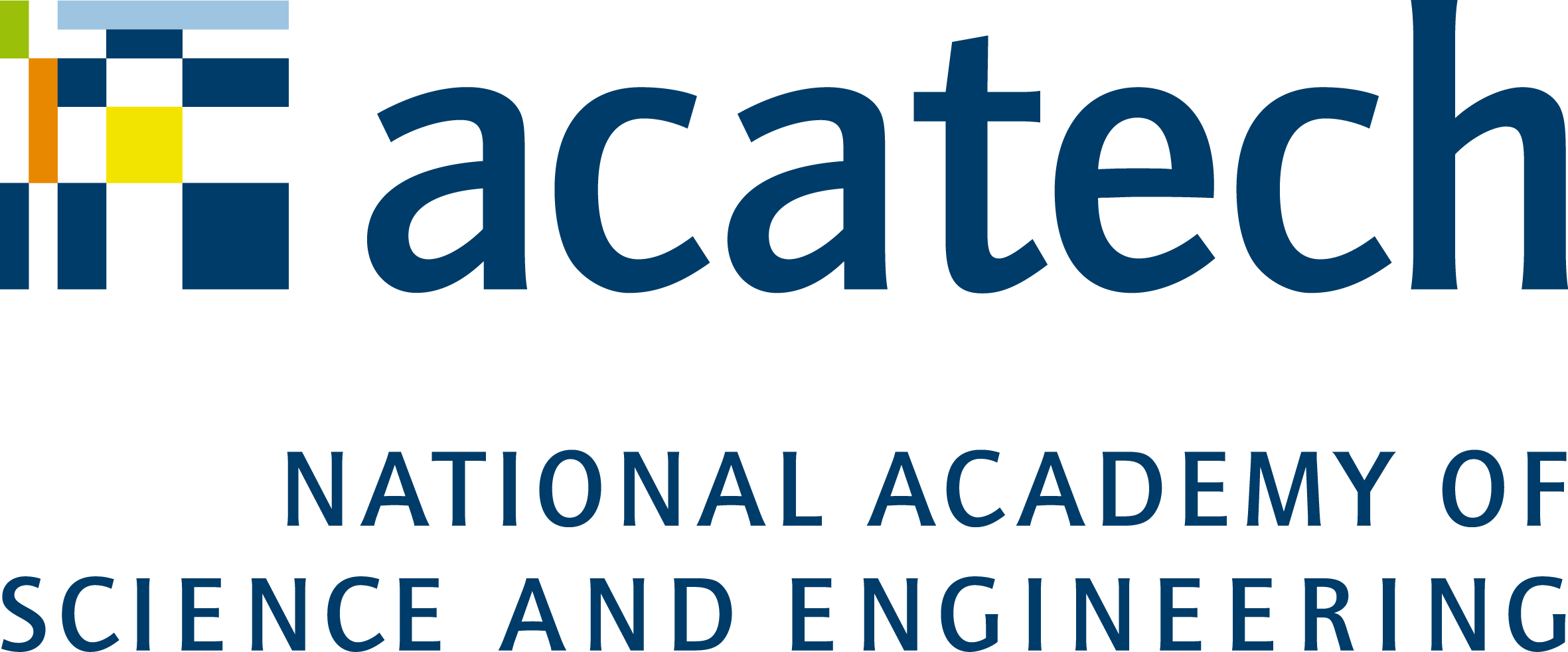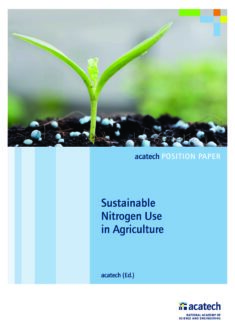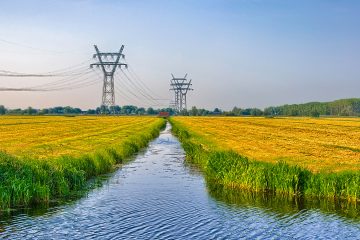How can farmers and consumers help to reduce excess nitrogen in the soil?

Munich, 26 May 2023
Plants need nitrogen to survive. In order to increase crop yields, it is therefore used as a fertiliser in farming – with negative consequences for nature, at least if too much is used (keyword “nitrogen surplus”). At acatech am Dienstag on 23 May, which took place as part of the Flower Power Festival Munich, experts in the fields of science and agriculture considered various strategies to reduce nitrogen content in soil and discussed what consumers can do to play their part.
In his welcome address at acatech am Dienstag on 23 May, acatech President Jan Wörner made participants aware of the value of nitrogen as an element. He said that nitrogen was essential for the hydrogen economy, for example. Specifically, combining nitrogen with hydrogen (in the form of ammonia, NH3), makes it very easy to transport hydrogen.
In his keynote speech, Thomas Scholten, Professor of Soil Science and Geomorphology at the Eberhard Karls University of Tübingen, followed up on the importance of nitrogen for the economy and society, using agriculture as an example. Nitrogen is used as a fertiliser in agriculture. In addition to having an impact on the environment, it also greatly affects grain yield (quantity) and protein yield (quality) in crops. He said, however, that excessive use of nitrogen also led to problems: too much fertiliser leads to a nitrogen surplus, whereby nitrogen compounds like nitrate, nitrite or ammonia are leached from the soil and build up in the ecosystem.
In order to reduce these surpluses, Thomas Scholten has worked with other scientists on the acatech project “Paving the way to sustainable nitrogen management” to develop appropriate recommendations for a systemic approach to reducing nitrogen surpluses. In doing so, the project has taken on board economic conditions, environmental effects and societal demands. Project manager Thomas Scholten concluded his keynote speech by outlining the variety of strategies put forward in the defined areas of action: “sustainable farming structures”, “economic and legal conditions”, “knowledge management, sustainable technologies” and “sustainable consumption”.
Three experts then commented on and contextualised the recommendations. Anette Freibauer, head of the Institut für Agrarökologie und Ökologischen Landbau der Landesanstalt für Landwirtschaft highlighted the importance of farm-produced fertilisers (solid dung, slurry, fermentation residues, compost) for agricultural nutrient cycles. She said, however, that there are problems, in particular with slurry, in applying it in a targeted and needs-based manner. Both Anette Freibauer and Thomas Scholten stressed that the nitrogen surpluses measured in Germany were highly subject to regional differences and therefore location-specific measures had to be taken. To conclude, she addressed again the important role of legumes, which fix nitrogen in a way that is resource efficient and environmentally friendly. These grass-clover plants and lucernes can be used to store nitrogen over the winter in the field. Moreover, food legumes can also be regionally cultivated as protein sources and thus supplement current food trends.
Eberhard Nacke, who now works as a freelance consultant in the area of agriculture and agricultural engineering, in particular for his previous employer, the agricultural machinery manufacturer, CLAAS, addressed needs-based nitrogen fertilisation in his statement. He said that the systematic gauging of the given conditions was a prerequisite for constructive risk management. He pointed out that differences in soils or the supply of nutrients and water are factors that affect the uptake of nitrogen in crops – more nitrogen fertilisation therefore did not automatically lead to a greater yield. He proposed that “prescription farming” – as a continuation of “precision farming” – should be the motto: by providing the farmer with information about the links between soil type and condition, water, heat and varietal characteristics, targeted and automated recommendations could be given even for different areas in a field. How much nitrogen should be used where and when, to create optimum growth conditions for plants, on the one hand, and to prevent the risk of nitrogen leaching into the groundwater or surface water, on the other hand?
Andreas Puchner spoke on behalf of the Bavarian Farmers’ Association. In his statement, he emphasised how important it was that changes in fertiliser law take into consideration regional differences. He said that blanket bans would not serve any purpose, as the problem of nitrogen surpluses was characterised by very significant regional differences. The use of farm-produced fertilisers also contributed to sustainable fertilisation systems, as it was only by using these that synthetic mineral fertilisers could be replaced. He added that it was still necessary, however, to process farm-produced fertilizers in such a way that they can be used instead of mineral fertilizers on a large scale and very efficiently.
Martin Bimmer, from the acatech Office, moderated the concluding discussion, during which the role of the consumer was examined. It was clear from this discussion that it is currently difficult for consumers to identify which foods are associated with a particularly high use of nitrogen. One suggestion from the floor was that an appropriate label would be desirable. The experts provided tips on how people could actively support the reduced use of nitrogen fertilisers. For example, the use of such fertilisers is regulated much more strictly in organic farming than in conventional farming. Even buying sourdough breads with long resting times makes a contribution. Such breads turn out well, even when a grain with a lower protein content is used, which in turn is the result of lower levels of nitrogen fertilisation.




